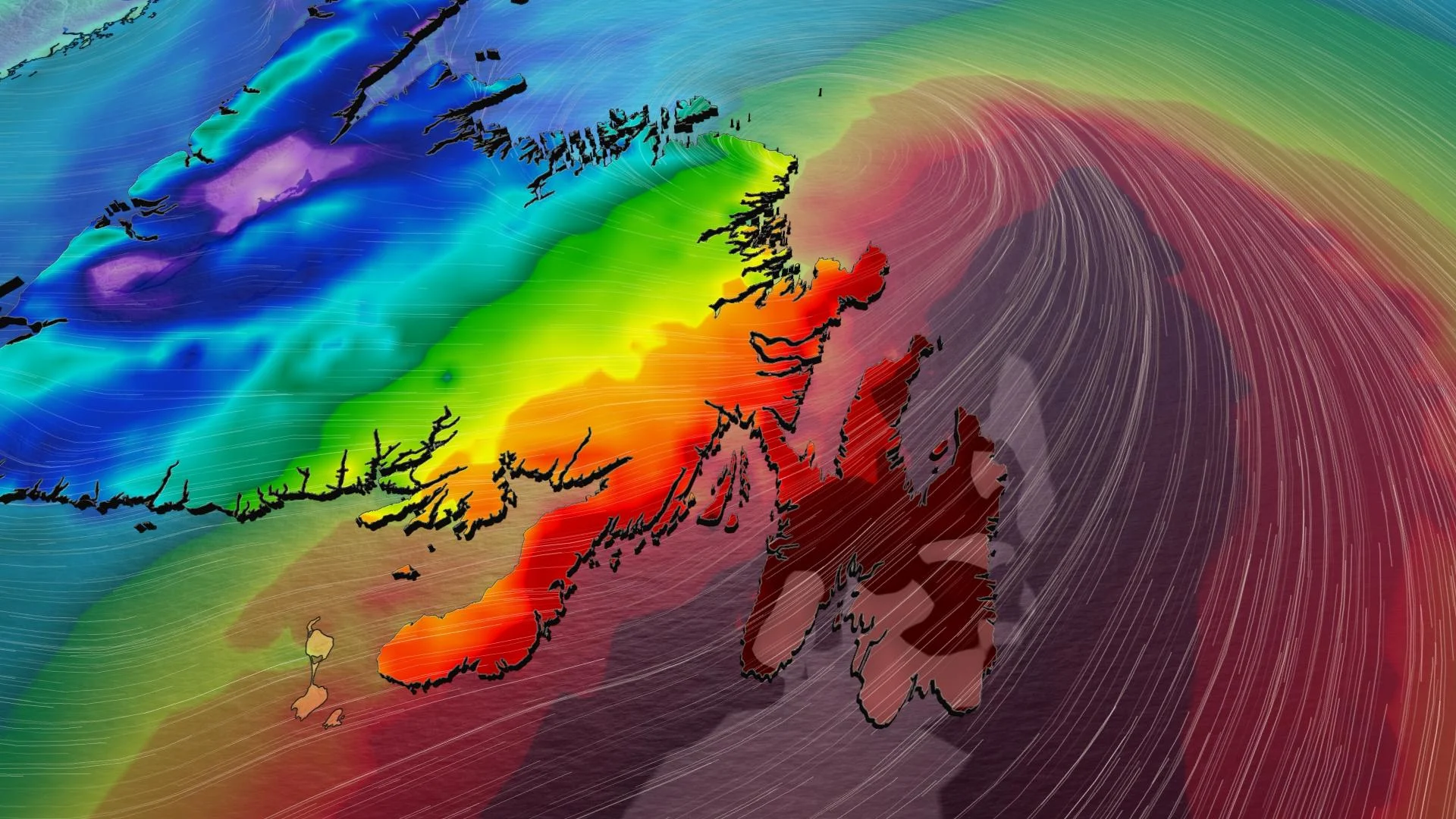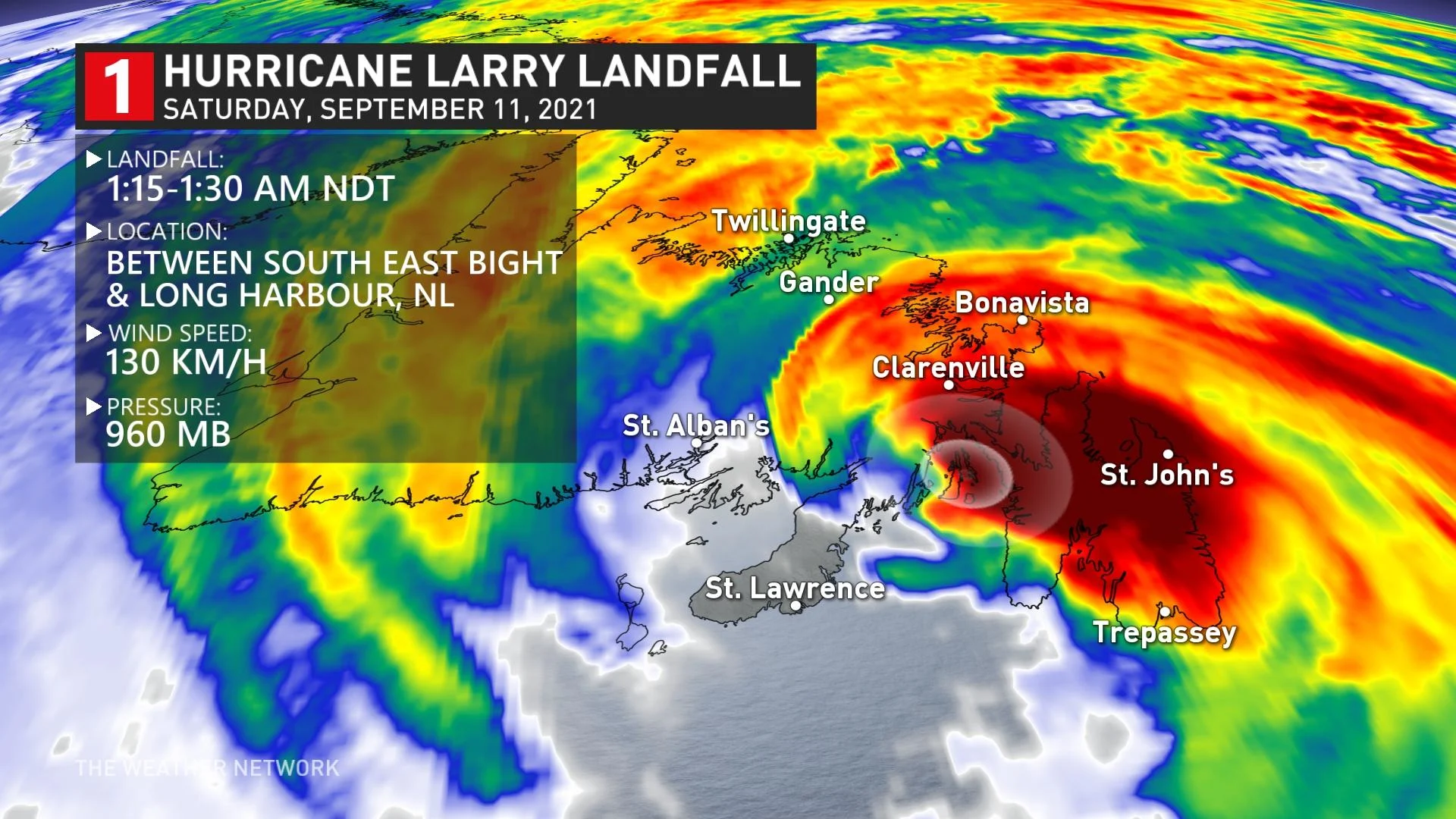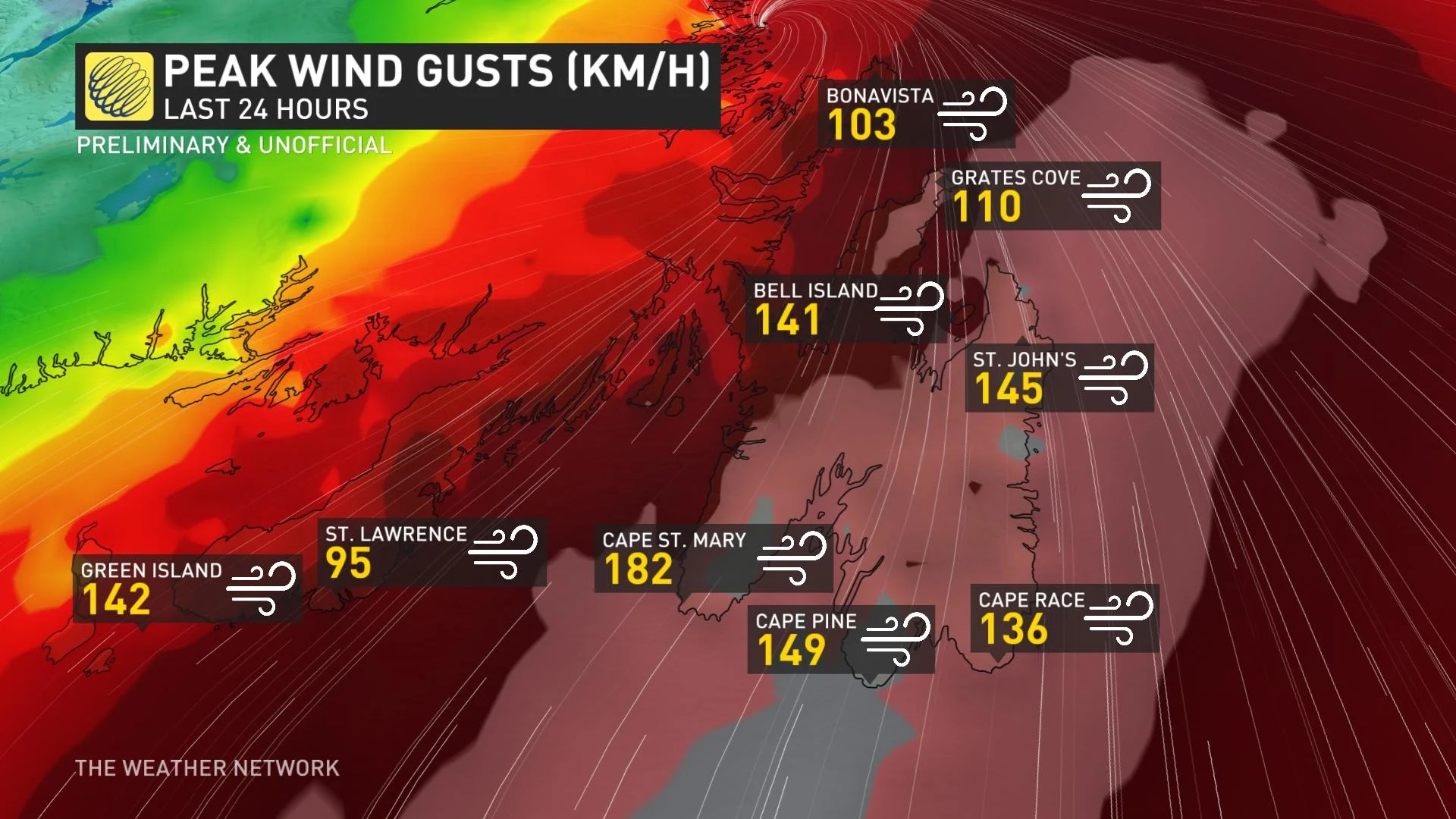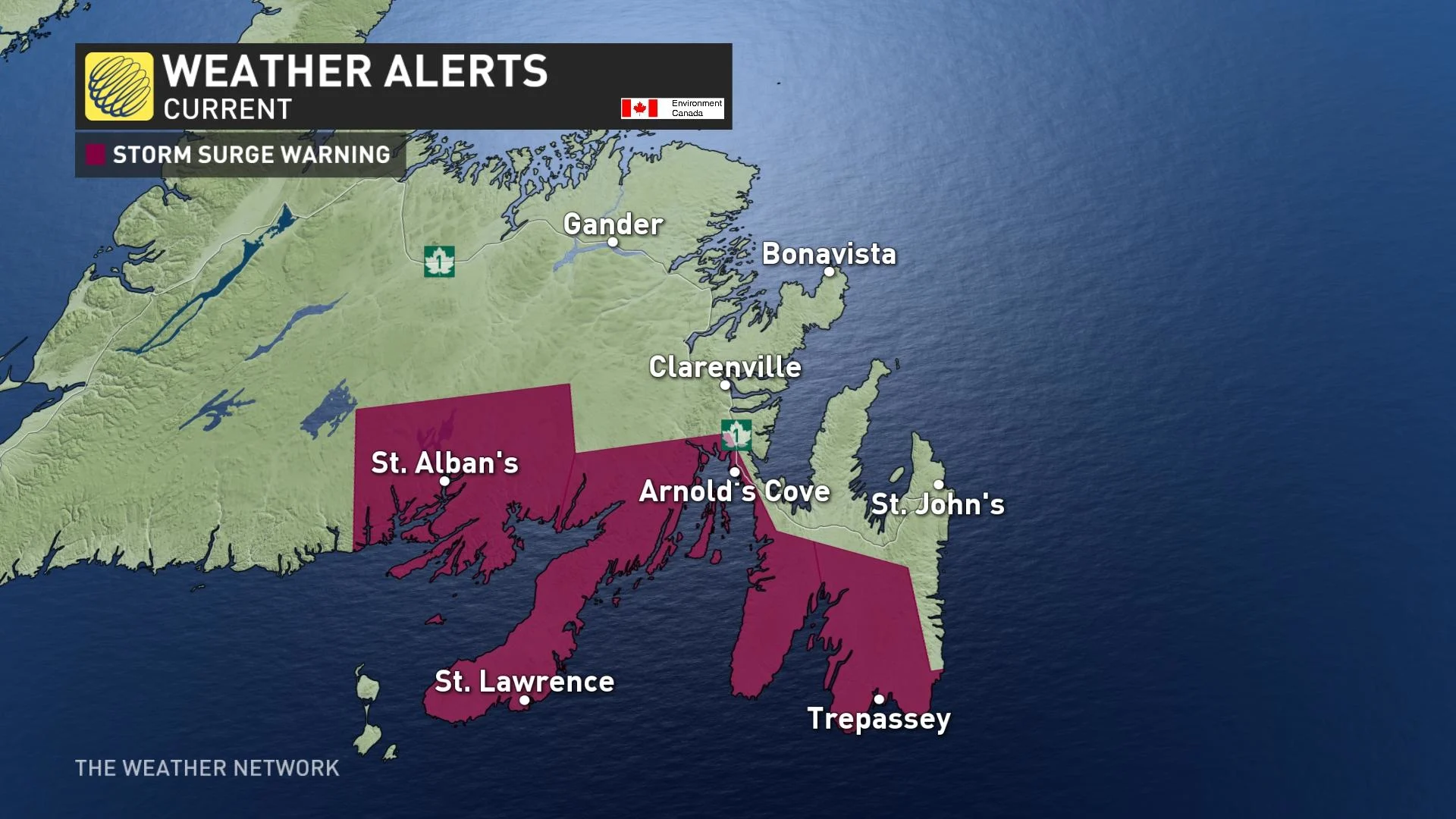
Hurricane Larry makes landfall with powerful winds, outages reported
The storm gathered speed as it raced toward the island, making landfall in the early morning hours as a Category 1 storm.
Hurricane Larry made landfall in the very early morning hours of Saturday near the isthmus of the Avalon Peninsula in Newfoundland, as the system ramped up the speed at which it was making its approach Friday. Even before landfall, winds greater than 130 km/h were recorded along southern areas of the peninsula, and thousands of power outages have been reported. In all, the island is experiencing a night of damaging winds and heavy rain.
LARRY MAKES LANDFALL AS A CATEGORY 1 STORM
More than a week after forming in the Atlantic, Hurricane Larry made landfall in Newfoundland's Avalon Peninsula, after spending the day gathering speed as it made its approach.
With winds of 130 km/h, the storm was a Category 1 hurricane upon landfall.

The storm was already having a major impact prior to landfall. Winds in the 130-150 km/h range were recorded over much of the southern Avalon, with downed trees being reported. An unofficial gust of 182 km/h was recorded at Cape St. Mary and St. John's International Airport recorded a gust of 145 km/h.

More than 52,000 customers were without power on the Avalon and Burin peninsulas, with structural damage also reported.
The worst conditions of the storm are easing and will continue to easte into Saturday morning. Winds will continue to be gusty but nowhere near the peak gusts experienced earlier in the night.
Newfoundland is used to strong winds during the winter storms that roll through the region, however, Larry was a different kind of storm due to the time of year. Most of the region’s windstorms occur during the winter months after the leaves have fallen. Trees here are still covered in foliage, which acts as a sail to more easily bring down branches as trees as Larry’s winds spread over the region.

The storm’s strong and broad wind field pushed a dangerous storm surge into Newfoundland’s southern coasts. A storm surge is seawater pushed inland by a storm’s persistent winds. Portions of the Burin and southern Avalon experienced a notable storm surge event coinciding with high tide earlier in the night. A tide gauge at Argentia recorded a peak water level of 150 cm higher than what is normal during high tide.
Conditions will continue to improve through Saturday morning as Larry races off toward the north. Some rain and stiff winds will linger into the morning. Saturday afternoon will remain gusty as the last vestiges of the storm exit the region.
Stay tuned to The Weather Network for the latest updates on Hurricane Larry.

